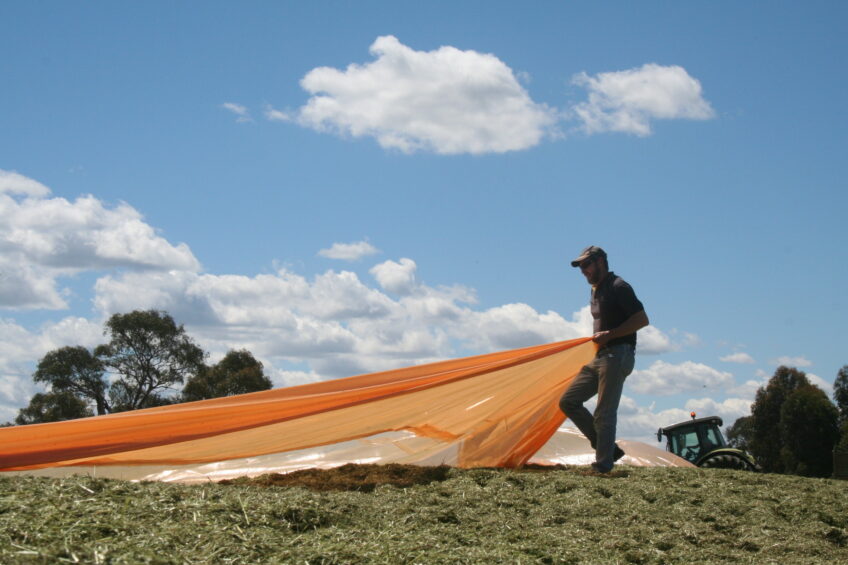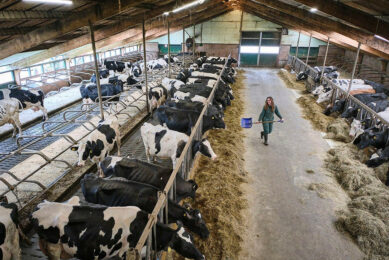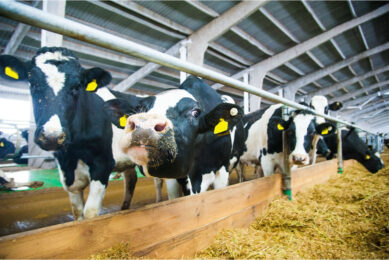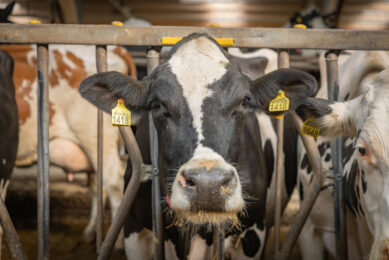Practical tips for optimal silage quality

At the end of the day, appropriate ensiling planning and management, using the right tools and products (plastic, inoculants) represent some investments that really pay back. This was one of the conclusions at a recently organized dairy seminar from Lallemand Animal Nutrition.
The part of farm-grown forage in the dairy ration is increasing, as it is seen as a good way to remain profitable. At the same time, quality must be watched, as fresh forage contains between one million and one billion microorganisms per gramme of dry matter (DM), good (acidifying bacteria such as lactic acid bacteria) or bad (clostridia etc.). The ensiling process is thus a real battlefield between these micro-soldiers, the result of which is critical for forage quality. In this article we take a look at each phase of the ensiling process, their impact on final forage quality and how to keep this under control in practice.
What happens during ensiling?
Ensiling is a 4-stage process (Table 1).
- Aerobic phase: it only lasts a few hours, while oxygen in the clamp is reduced.
- Fermentation stage: it begins when the silo is anaerobic. It can last several weeks. This is when acidification occurs, when lactic acid bacteria (LAB) present in the forage transform sugars into lactic acid. The pH drops to 3.7-5.0. Undesired bacteria, sensitive to low pH are inactivated. Acidification is the key step of silage making – it should be as fast as possible to limit the development of undesired bacteria.
- Stable phase follows next: once acidification is completed, little change occurs as long as the silo remains airtight. The number of microorganisms decline at low pH, some remain active (e.g. L. buchneri), while others remain dormant, such as Clostridia and bacilli that can survive as spores.
- Feed-out: when the silo is opened, air penetrates through the silo face and aerobic microorganisms can become active again, such as moulds, spoilage bacteria or yeasts.
What can go wrong?
Specific issues at each stage can occur and lead to poor silage quality and DM losses. Some of the main issues include for example Clostridia fermentation. When forage sugar and DM contents are low, acidification is too slow and insufficient and clostridial or butyric fermentation can occur. Clostridia degrades lactic acid into butyric acid. They can produce high ammonia and butyric acid in the silage and certain can even be harmful (e.g. botulinum). Poor fermentation can also lead to protein degradation. The crude protein analysis will not reflect this issue as it is based on total nitrogen content. It is important to look at the nature of the nitrogen compounds. Proteolysis leads to the production of undesired compounds such as amines or ammonia.
Table 2 indicates target values for good forage quality (from Demarquilly, 1998). Another issue is aerobic instability. This is due to an excess of oxygen during the stable or feed-out phase. Aerobic organisms (yeast and moulds) start developing, leading to spoilage. Yeast consumes lactic acid and the pH can raise again, leaving room for further degradation from undesired microorganisms. Silage is heating up as dry matter is being degraded and palatability is reduced.
Prevention is better than cure
Good ensiling practices, from harvest to feed-out, are essential to ensure optimal silage preservation. In particular, compaction and sealing are keys to prevent aerobic spoilage. There is a direct correlation between silage density and DM loss. Research indicates that optimal packing density is around 240kg/m3. Thus, careful ensiling planning also involves adapting the tractor weight to speed of harvest.

Correct silo covering
The silo should be sealed as quickly as possible with an effective sealing system. An uncovered bunker will lose approximatively 50% of dry matter in the top first metre. This goes down to 20% when using 125 micron plastic and tyres, while the use of an effective oxygen barrier will reduce DM loss to under 10% in this top metre. Proper sealing also limits mould growth and the need to discard spoiled silage. Lining of the bunkers sidewalls with plastic sheeting further reduces DM losses and spoilage (around 10% reduction of DM loss in the first 25cm).
Silage additives
When used on top of good silage management practices, silage additives can help at both ends.
- Firstly by speeding-up acidification during phase 1 and 2: for example with difficult to acidify forage types (low sugar contents, grass, legumes, etc), the use of homofermentative lactic acid bacteria, which convert sugars into lactic acid, help reach a safe pH faster. These bacteria can be combined with fibre degrading enzymes that help increase sugar levels to fuel lactic acid production.
- And secondly by improving aerobic stability: combined with good compaction and sealing, the use of heterofermentative bacteria such as Lactobacillus buchneri NCIMB 40788 at an appropriate dose (300,000 bacteria/g of fresh silage) is proven to increase aerobic stability and reduces the risks of spoilage. Contrarily to homofermentative, heterofermentative bacteria convert sugar into lactic acid, then part of the lactic acid into other acids such as acetic or propionic acid, which have a documented anti-mould activity.
However, research from Wisconsin University has shown that the quantity of acetic acid produced in silage by L. buchneri NCIMB is too low to impact feed intake in dairy cows. Desiling technique is also important to preserve silage quality. The silo face should advance by at least 30cm/day. It is important to size the bunker according to the herd size. Several small silos are better than a larger one. Moulded silage must be discarded as it reduces feed intake and can be a threat to animal welfare (presence of mycotoxins).










